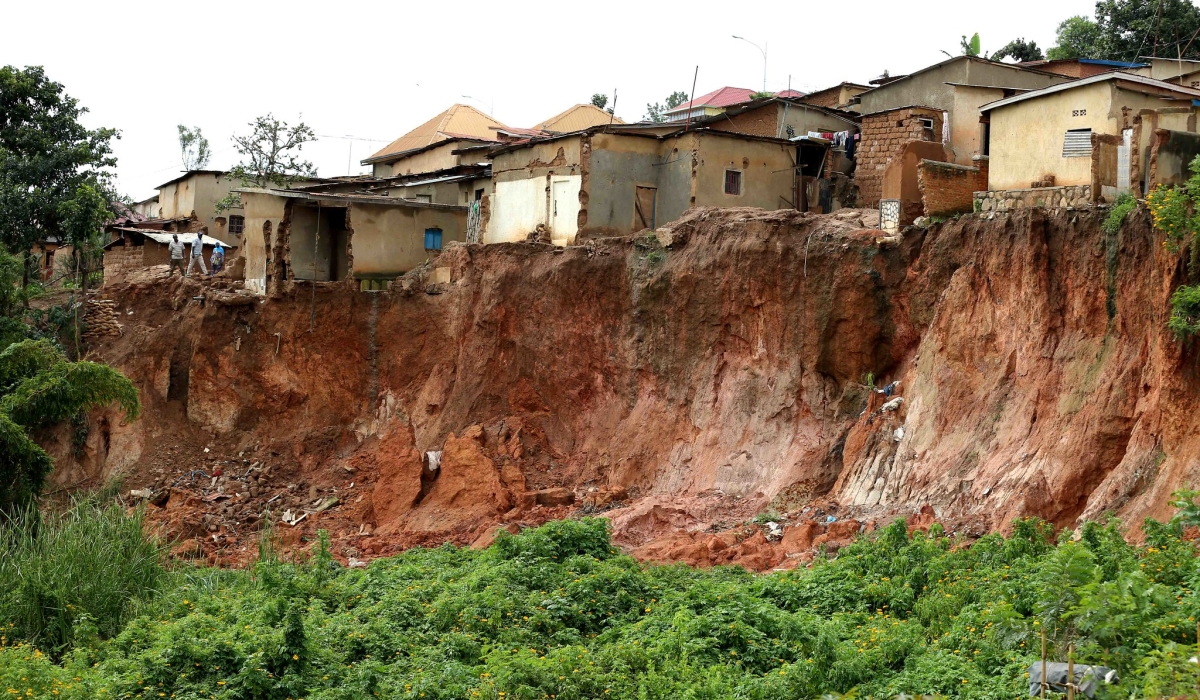The City of Kigali has ordered all dwellers in identified high-risk zones to relocate ahead of the rainy season that could start in September.
The call was made in a statement that also defines high-risk zone areas.
“Those obliged to relocate are those living in identified high-risk zones, those living at a 50 per cent slope, and those between 30 per cent and 50 per cent slope where houses are constructed without complying with standards and guidelines that make the areas resilient to disasters,” says the statement.
Those to relocate, it says, also include people living five metres from drainages that can endanger their lives, and those living 20 metres from the wetlands.
High-risk zones are also those in residential areas but in unplanned settlements creating vulnerability and are places that are inaccessible, especially during an emergency.
Due to a lack of basic infrastructure such as drainages, roads, walkways, flood mitigation facilities, and others, these zones become high-risk.
The warning was issued at the time the City of Kigali’s recent assessment found 24,404 plots with about 27,000 houses in high-risk zones despite living in residential areas in 35 sectors of the capital.
In May 2023, the City of Kigali announced that 5,812 households had to urgently relocate from high-risk zones following deadly landslides and floods in Western, Northern, and Southern provinces.
The city has stated that dwellers with old and damaged houses should immediately do renovation and rehabilitation to build resilience to rain-induced disaster effects.
“Rehabilitating old and damaged houses should be done with permits from authorities in charge,” the statement reads.
Rainwater harvesting
As the rainy season begins, floods and soil erosion are likely to ravage the country again, destroying property, infrastructure, and livestock, the city has warned.
The recommended measures also include rainwater harvesting, soil erosion control, cleaning water channels, and avoiding waste in drainages and rivers among others.
However, according to Rwanda Water Resources Board (RWB), rainwater harvesting is just 17 per cent across the country.
Only two per cent of the households use rainwater tanks while most households that harvest rainwater use a ditch, which accounts for 13 per cent of all the types of rainwater management systems used in the country.
It would take an investment outlay of $40 million to equip all identified public buildings with rainwater storage systems, studies show.

